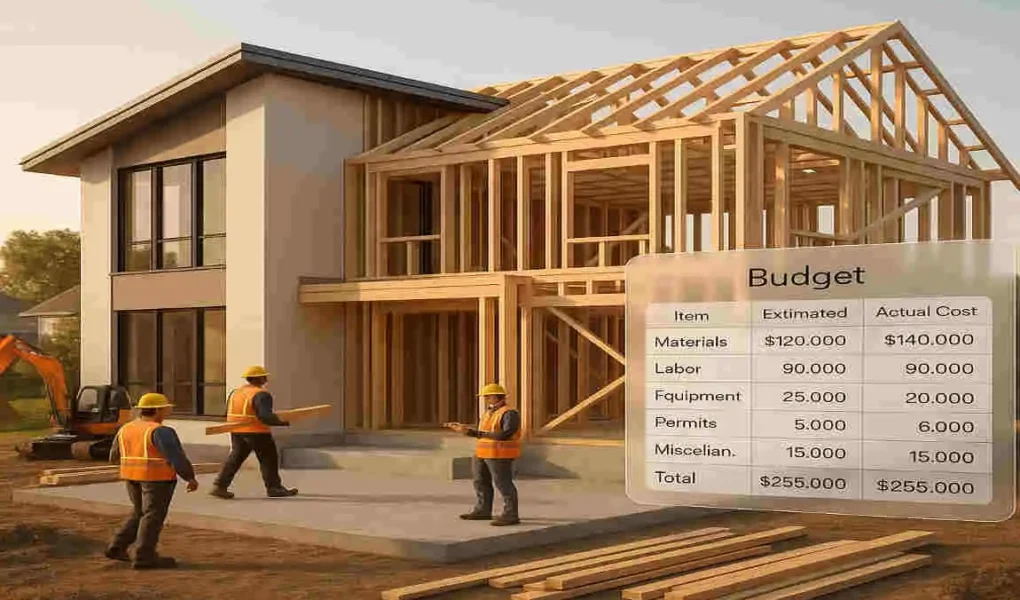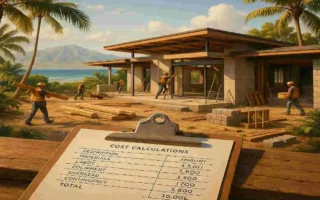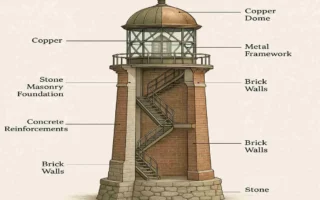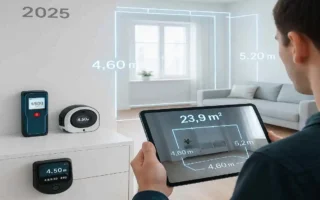Building your dream home is an exciting journey. For many, it’s the chance to create a space uniquely tailored to their needs and style. But one critical question lingers: how much does it really cost to build a house?
Understanding the average cost to build a house is an essential first step in turning your vision into reality. Without a clear understanding of the costs involved, the process could lead to unexpected expenses or, worse, unfinished projects. Whether you’re planning a modest starter home or a luxurious custom build, having a realistic budget is key.
What Influences the Average Cost to Build a House?
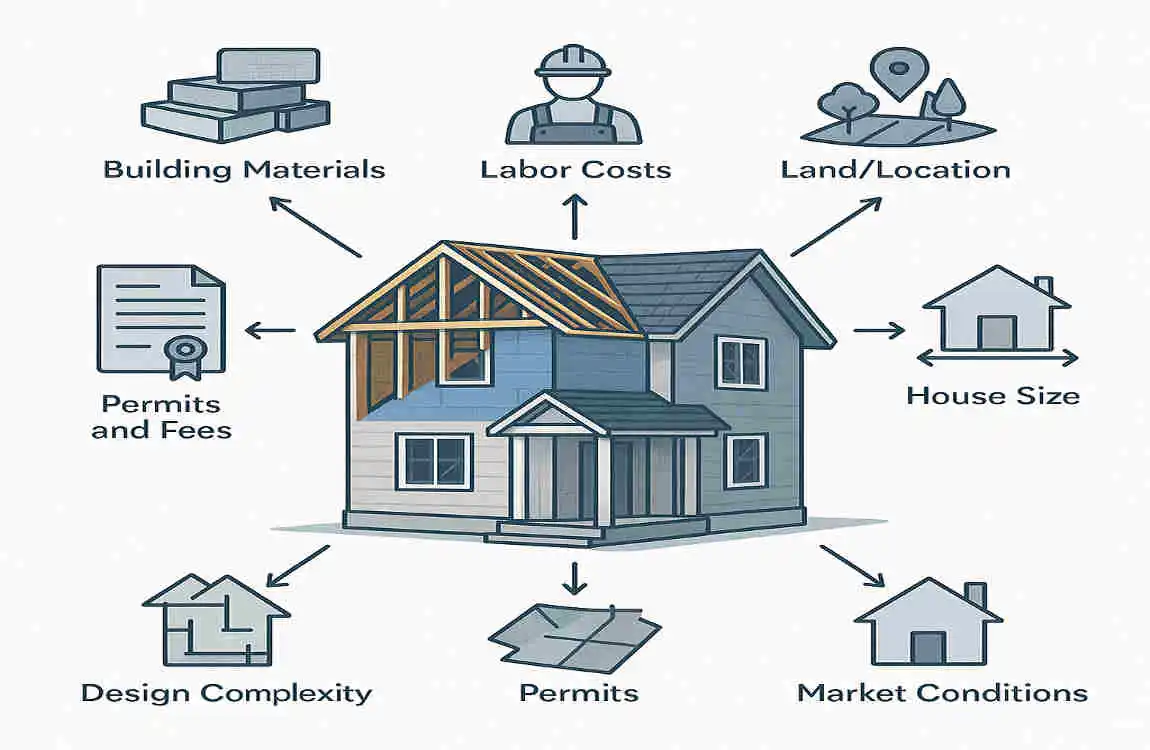
The average cost to build a house isn’t a one-size-fits-all figure. Several factors contribute to the overall price tag, and understanding these variables will help you prepare for all potential expenses.
Location and Land Prices
The location of your home plays a significant role in determining the cost. Land prices vary widely across cities, suburbs, and rural areas. Urban areas typically have higher land prices due to demand, whereas rural areas may be more affordable but may involve additional transportation or utility setup costs.
Size and Square Footage of the Home
Naturally, the larger the home, the higher the cost. Cost per square foot is a critical metric that helps estimate expenses. A larger home requires more materials, labor, and time, which quickly adds up.
Architectural Style and Complexity
A simple, single-story home with a straightforward design will cost less than a multi-story house with intricate details. Architectural complexity, such as unique rooflines, custom features, or unusual layouts, can significantly increase the price.
Materials and Finishes
The materials you choose for your home significantly impact costs. For instance, high-end finishes like granite countertops, hardwood flooring, and custom cabinetry will cost more than budget-friendly alternatives like laminate or vinyl.
Labor Costs and Contractor Fees
Labor is a substantial part of your total cost. Rates vary depending on the region, the contractor’s reputation, and the project’s complexity. A reputable contractor might charge more upfront, but their expertise can save you money in the long run by avoiding costly errors.
Permits, Fees, and Inspections
Before construction begins, you’ll need to secure permits and schedule inspections in compliance with local regulations. These costs can vary depending on your location and the complexity of your build.
Market Conditions and Availability of Resources
The state of the construction market can also influence costs. For example, during times of high demand, labor and materials may become more expensive. Supply chain issues, like material shortages, can further drive up costs.
Breaking Down the Average Cost to Build a House
To understand where your money goes during construction, it’s helpful to break down the costs into specific categories. Here’s an overview:
Land Acquisition Costs
Purchasing land is typically the first step in building a home. Depending on its location, land can account for a significant portion of your budget, especially in high-demand areas.
Site Preparation and Foundation Expenses
Before construction begins, the land must be prepared. This includes clearing trees, grading the site, and laying the foundation. Foundation costs depend on the type of foundation (slab, crawl space, or basement) and the soil conditions.
Construction Costs (Framing, Roofing, Plumbing, Electrical)
Construction is the most significant expense. It includes framing the structure, installing the roof, and adding plumbing and electrical systems. Each phase requires skilled labor and high-quality materials.
Interior Finishes (Flooring, Cabinets, Paint)
Interior finishes—flooring, cabinetry, countertops, and paint — bring your home to life. These costs can vary dramatically based on your taste and budget.
HVAC and Other Mechanical Systems
Heating, ventilation, and air conditioning (HVAC) systems are essential for comfort and air quality. Additional mechanical systems, such as water heaters and solar panels, can also add to the cost.
Landscaping and Outdoor Additions
Don’t forget the exterior! Landscaping, driveways, patios, and fencing can enhance your home’s curb appeal but come with additional costs.
Cost Per Square Foot: A Key Benchmark
What Is Cost Per Square Foot?
Cost per square foot is a simple way to estimate construction costs. It divides the total construction cost by the home’s square footage, giving you a clear benchmark to work with.
Region Cost Per Square Foot (Approx.)
Urban Areas $150 – $250+
Suburban Areas $100 – $200
Rural Areas $80 – $150
Regional Variations in Cost Per Square Foot
Costs vary dramatically across regions. For example, building a home in California or New York will typically cost more than in states like Texas or Alabama due to differences in labor rates, material costs, and land prices.
How to Calculate Your Estimated Cost
To estimate your cost, multiply your home’s desired square footage by the average price per square foot in your region. For example, a 2,000-square-foot home at $150/sq ft would cost approximately $300,000.
Hidden and Unexpected Costs to plan For
Even with meticulous planning, homeowners often overlook hidden costs. Here’s what to watch out for:
- Utility Hookups: Connecting your home to water, electricity, gas, and sewer systems can add thousands to your budget.
- Design Changes: Mid-construction changes to the design or materials can lead to additional expenses.
- Driveways and Landscaping: Adding driveways, gardens, or outdoor features can cost more than anticipated.
- Emergency Contingency Funds: Always set aside 10-15% of your budget for unexpected expenses.
Comparing Building New vs. Buying Existing
Cost Differences
Building a new home is more expensive up front than buying an existing one. However, a new home often comes with lower maintenance costs and modern energy efficiencies, which can save money over time.
Pros and Cons of Building New vs. Buying
Building New Buying Existing
Full customization Limited customization
Higher upfront costs Lower upfront costs
Modern features and energy savings , Potential for hidden repairs
Financing Your Dream Home Construction

Types of Construction Loans
Construction loans are short-term loans designed to cover the costs of building a home. They typically have higher interest rates but convert to a traditional mortgage once construction is complete.
Budgeting for Interest and Fees
Be sure to budget for loan interest and any origination or closing fees. These can add up quickly if not planned for.
Tips for Securing Favorable Financing
Shop around for lenders, improve your credit score, and consider working with a mortgage broker to secure the best terms.
Tips to Save Money Without Compromising Quality
- Choose Cost-Efficient Materials: Opt for durable yet budget-friendly materials like engineered wood or laminate.
- Simplify Design Plans: A simple floor plan with fewer corners and curves can save on labor and materials.
- Hire a Reputable Contractor: A reliable contractor can help you avoid costly mistakes.
- Do Some DIY Work: Simple tasks like painting or landscaping can save money if done safely.
- Negotiate Prices: Always negotiate for better rates on materials and labor.
How to Get Accurate Estimates for Your Build
Accurate estimates are essential for budgeting. Here’s how to ensure you get them:
- Get Multiple Contractor Bids: Compare quotes from at least three contractors to find the best value.
- Use Cost Estimators: Online tools and calculators can provide rough estimates based on your location and home size.
- Work With Architects Early: Collaborating with architects during the planning stage can help you identify potential costs and avoid surprises.
Real-Life Examples: Average Cost to Build Houses in Different Regions
Urban Area Build (High Cost)
Building in a city like Los Angeles could cost $250-$300 per square foot, with a total cost exceeding $500,000 for a 2,000-square-foot home.
Suburban Build (Moderate Cost)
In suburban areas, costs range from $100 to $200 per square foot, making a 2,000-square-foot home cost between $200,000 and $400,000.
Rural Build (Lower Cost)
Rural builds are often more affordable, with costs starting at $80 per square foot. A 2,000-square-foot home might cost $160,000 or less.

